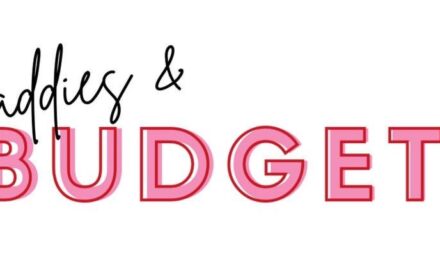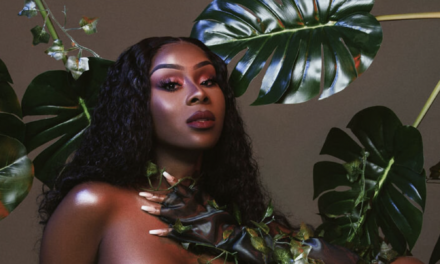
JULY 30, 2021
full tilt
New Research: The Creator Economy Is Driven by the Content Entrepreneur
Content entrepreneurs are the people driving the creator economy. Yet, few truly understand them.
That’s why we created The Unconventionals, a benchmark study of content entrepreneurs turning valuable and interesting content into revenue streams. They told us what motivates them, what they’re doing to build a content business, how they earn revenue, what they aspire to achieve, and more.
Here is some of what they had to share.
Who are content entrepreneurs?
Don’t call them influencers, content entrepreneurs build businesses. They do that with a singular focus – growing and monetizing their audiences by filling a specific informational need. (Yes, they’re building something akin to a media company.)
Of those surveyed, 40% are Gen X, while 32% are millennials, with Baby Boomers (23%) and Gen Z (5%) creating content businesses too. Among all content entrepreneurs, it’s split between those who do it full time (52%) and those who do it as a side gig (48%).
What motivates them to be content entrepreneurs?
Independence (78%) tops passion (73%) among the benefits of content entrepreneurship. Not surprisingly, many of the most popular benefits revolve around independence: flexible work hours (69%), enjoy my work hours (60%), choose where I live (43%).
A majority (59%) do it to challenge themselves, while 18% say they’re motivated to prove themselves to others.
In a separate question, nearly nine in 10 agreed they became content entrepreneurs “to achieve financial freedom on my own terms.”
How do they grow their audience?
Search engine optimization (SEO) is the only audience-growth tactic cited by more than half (56%) of the content entrepreneurs. Hashtags came in second, cited by 48%. Partnerships with creators or entrepreneurs came in third (44%), followed closely by social media advertising (43%).
Of the group of full-time content entrepreneurs, the median amount invested in their business was $10K.
What about revenue?
Any business success comes down to revenue. Of those who operate their content business full time, the median annual revenue was $50K, with experience being a factor in higher revenue. The median revenue for content entrepreneurs in business four to seven years was $100K, while those in it for longer than seven years saw a median revenue of $125K.
No single revenue stream dramatically outweighed others in terms of most profitable. Sixteen percent cited online courses and workshops hosted on their platform, while 13% cited advertising and sponsored content, followed by affiliate marketing and speaking at 9% each.
We also found the number of revenue sources differed between full-time and part-time content entrepreneurs. Full-timers had at least four, while part-timers relied on only one or two.
What’s next for their content businesses?
Content entrepreneurs see big potential in their businesses. Over half (57%) say they want it to employ a few or many people, with 36% indicating they want to be solopreneurs. Only 6% intend to keep it as a hobby.
One of the challenges about content businesses is the entrepreneur acts as the personality of the business. That means they will have more difficulty stepping away from the business. Just 13% of those surveyed say they eventually plan to sell the business.
I’ve shared just a glimpse of The Tilt’s findings from The Unconventionals study. Special thanks to our research partners Ann Handley and Unemployable for making this possible, as well as Libsyn, Active Campaign, and Youpreneur with an assist.
– Joe Pulizzi
To see the charts and access all the detailed information in the full report, visit the blog. We are also offering a subscriber-exclusive supplement to the report. See here for our 32-page, data-rich supplement to the main report where we review ALL the findings.
the tilt shout-out
Our friend Jay Acunzo likes to say, “Great marketing isn’t about who arrives. It’s about who stays. Don’t just grab attention. Hold it.” Marketing jobs at Google and HubSpot showed Jay how little we understand about this idea. Today, he writes a weekly newsletter to thousands of entrepreneurs plus creatives from Red Bull, Adobe, the NY Times, the BBC, Shopify, and more, all about one idea: how to resonate more deeply to grow your audience and leave your legacy.
Subscribe to Playing Favorites for free.
Fold Factory’s Trish Witkowski Shares Her 12-Year Content Entrepreneur Journey
Entrepreneur: Trish Witkowski
Biz: Fold Factory
Tilt: Creative folded solutions
Channels: Blog YouTube (12.2K) LinkedIn Pinterest (1.4K)
Rev Streams: Videos, events, licensed content, books, courses
Our Favorite Actionable Advice
- Don’t expect big success right away: Trish found a unique content tilt, but her potential audience hadn’t yet realized they wanted it. So she devoted more time to education.
- Deliver content consistently: Creating a weekly series allows Fold Factory to develop a fan base, an audience that looks forward to the content. That’s why Trish feels a responsibility to make sure she doesn’t miss a week.
- Don’t give up on poor-performing good content: Throwing your hands up isn’t the best option if a content asset fails to deliver. Tweak it, update the title, or edit the description, then release it back into the world.
Some of the Story:
Trish Witkowski knows more about brochure folding than anyone else in the world. That education started over 20 years ago as the thesis for her master’s degree.
“There just was nothing available on the topic,” she says. “I was working as a designer. I didn’t know what my options were. So, it really was my own curiosity. I wanted to know how many folding styles are there for brochures and the field was wide open.”
It went from a thesis project to a passion project, then a side hustle, and finally a full-time content business for more than 10 years. She had high hopes early on. “I thought I’d be a huge success,” Trish explains. It started as a software company that built templates for folded materials, and Trish wrote a book on it too.
She thought, “Wow. Nobody else has ever documented this. I’m going to be a big hit.” But then reality hit. Since nobody had ever done it, the audience wasn’t ready for it. “You have to teach them how to use it. There’s a learning curve I didn’t see at the time,” Trish says.
Her mission shifted to one that would change the conversation, to prove the value to marketers of doing something different with their brochure folding. To bring it to the mainstream, she started doing videos.
Now 12 years later, she’s produced over 550 weekly videos, and Fold Factory is a full-fledged content business with a diversified revenue stream. She has sponsors, sells products, does events, licenses her content, writes books, and creates courses.
Focused on publishing one video every week is a deliberate strategy. As Trish explains: “If I was designing and sharing a bunch of things that I was doing, I don’t think it’s as interesting.” Instead, people look forward to the video, wondering who will be on the show, what the fold will be, etc. She creates the element of surprise.
And it’s not just about the fold and guests; it’s also about Trish’s T-shirt. In each video, she wears a different fun T-shirt with a fold-related message, such as “Fold your horses,” “This too shall fold,” and “This is my resting fold face.”
“It became kind of my hook. People watch just as much to see what I’m showing, but they also get a kick out of the shirts,” she says.
Trish doesn’t use a script in her videos. She prefers to memorize the specs around the project and reflect on what she wants to say before she turns on her cameras. Yes, “cameras” is plural. She’s expanded to a multi-camera shoot for different angles.
“I have a formula with my show. It’s an inspiration-plus-education model. And I’m always sharing the creative side plus the under-the-hood production to try to help people learn,” Trish says.
– Ann Gynn
All the Story: To learn why Trish decided to make her own shirts, chose to teach classes on LinkedIn Learning, and her advice for content entrepreneurs, check out the longer story.
quick talk
Caught on … Twitter
“No matter what, the very first piece of social media real estate I’d start with is a blog.” – Chris Brogan (h/t to Shawna Smith)
things to know
Money
-
Useless virality: Kevin Parry’s video of him turning himself into objects (banana, snow, balloons, etc.) got 73M views on Twitter, TikTok, and Instagram. He didn’t make a dime. (Buzzfeed News; h/t Simon Owens)
Tilt Take: We’ll let Kevin take this one: “Tell your teenage child that going ‘viral’ is useless. I’m successful in this industry because I can bring a decade’s worth of experience to the table.” (Our only change in his comment? Change “teenage child” to “everybody.”) -
YouTube billions: YouTube earned $1B more in Q2 than it did in Q1 for a total of $7B in ad revenue. Its earnings report also revealed its Shorts now bring in 15B views a day (more than 2x more than it did in Q1). (Tubefilter)
Tilt Take: With advertisers investing more in YouTube, it’s a good time to visit your YouTube ad strategy to ensure you’re getting the most from that increased interest.
Audiences
-
Get together: Instagram is testing Collab, a new way for people to co-author feed posts and reels. If an invitation to collab is accepted, both accounts will appear in the post or reel header. It also will be shared with both sets of followers. (Instagram’s Vishal Shah; h/t to Matt Navarra)
Tilt Take: The Tilt’s new research found a lot of content entrepreneurs grow their audiences through creator and entrepreneur partnerships. If the test goes well, Instagram will make that easier. -
Newsletter friends: “(The newsletter’s) audience may be a community of people who imagine themselves holed up in the same bunker or who all get the same joke.” (The Cut; h/t Inbox Reads)
Tilt Take: It’s a really long essay on newsletters, but this point is especially noteworthy. People willingly give up their email addresses to belong to your content community. Don’t treat them as just another number in your subscriber count.
Tech and Tools
-
Writing matters for videos: A new YouTube SEO study found over half of videos in the first position had 50-plus words in the description. (Semrush)
Tilt Take: Don’t just write a sentence about your video. Craft descriptions that establish what viewers can expect and entice them to watch until the end. -
Substack supports: Newsletter creators on the platform can apply to join Substack Grow, a month-long course to help grow your readership and paid subscriptions. Requirements? Substack suggests you have hundreds of subscribers and a 25% open rate. (Substack)
Tilt Take: Content entrepreneurs on Substack would do well to take the training to better learn how to turn their newsletter into a solid revenue stream.
And Finally
-
Be sensitive: Instagram will let you adjust your sensitive content level with its new control feature. (Instagram)
Tilt Take: Being on Instagram may be necessary to conduct your content business, that doesn’t mean you need to put up with irrelevant and personally troubling content. -
People are good: Human Hope podcaster Carlos Whittaker went live on Instagram so his audience of 220K followers could hear and see Tonee Valentine’s talented piano playing and a near-empty tip jar in Atlanta’s airport. In the first 30 minutes, over $10K had been raised. Two days later, that number hit $61K and continues to grow. (Washington Post)
Tilt Take: What can you do for the greater good with your growing audiences? (Oh, and please read the full-length article. The backstory on Tonee is amazing.)
we’re a stan for Manny Gutierrez Jr.
An unforgettable force in beauty, MannyMUA has fought for years to be the premier male makeup guru on YouTube. In his mid-20s, his primary focus was medical school until he found his footing in the beauty industry working at Sephora and MAC cosmetics counters.
With newly learned makeup tips, Manny opened a YouTube account, offering affordable and readily available advice. Quitting his day job when he reached 100K subscribers, the “boy beauty vlogger” quickly realized his new venture could become a lucrative business.
The launch of Lunar Beauty “for men, women, and everyone in between” in May 2018 and breaking ground as Maybelline’s first male ambassador seismically shifted the YouTuber’s career. Months following the makeup line’s big reveal, Elle Australia reported Manny brings in at least $7.9K per Instagram post and has generated close to $436K from his channel, which now has 4.86M subscribers.
Why we’re a Stan: With an oversaturated market of female makeup artists and lovers, Manny jumped at the chance to be YouTube’s go-to male beauty expert. For years, cosmetics was strictly a women’s game, but Manny is at the forefront of an industry makeover stemming from the rise of Gen Z and increasing interest in busting traditional gender norms.
– Shameyka McCalman
the business of content
In this week’s Content Inc. podcast, Joe sits down with Brian Clark, one of the OGs of content marketing and content entrepreneurship, and discusses how he started and grew his business into millions.
In the latest this This Old Marketing podcast, Joe and Robert digest the breaking research from The Tilt on the state of the content entrepreneur. What makes them successful? How long does it take to build an audience? How do they make money?
the tilt team
Your team for this issue: Joe Pulizzi, Ann Gynn, Laura Kozak, Marc Maxhimer, and Dave Anthony, with an assist from Shameyka McCalman, and Don Borger.
Get more of the Full Tilt stories on TheTilt.com.
Know a content creator who’s going full tilt? DM us or email [email protected]
Was this email forwarded to you? Get your own sub here.
Copyright ©2021 Tilt Media LLC All rights reserved.
Unsubscribe | Update your profile | 17040 Amber Drive, Cleveland, OH 44111





